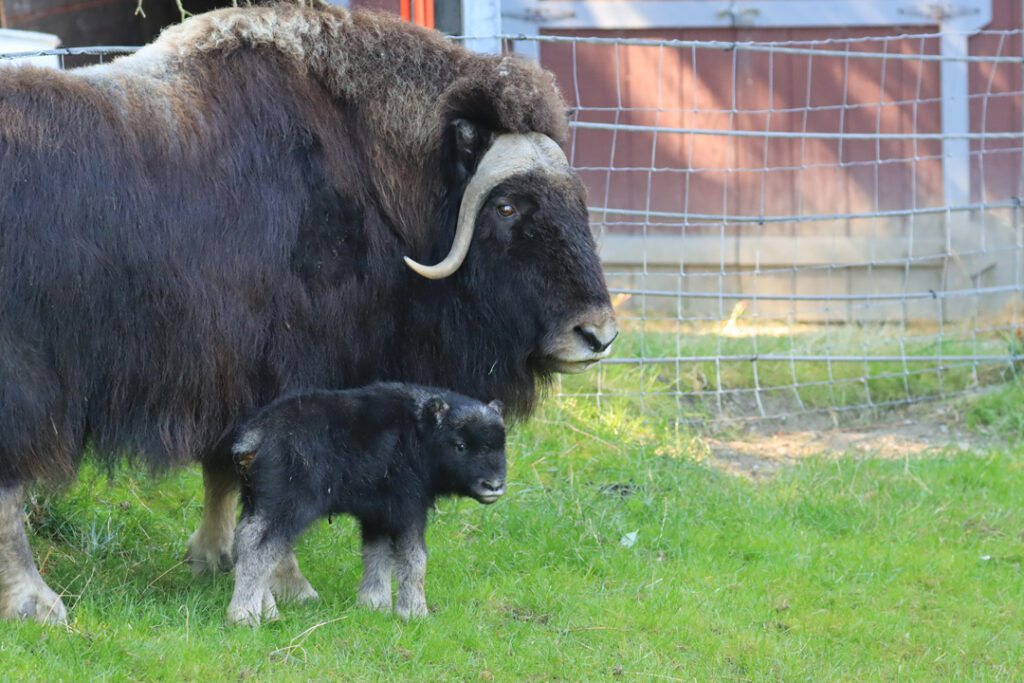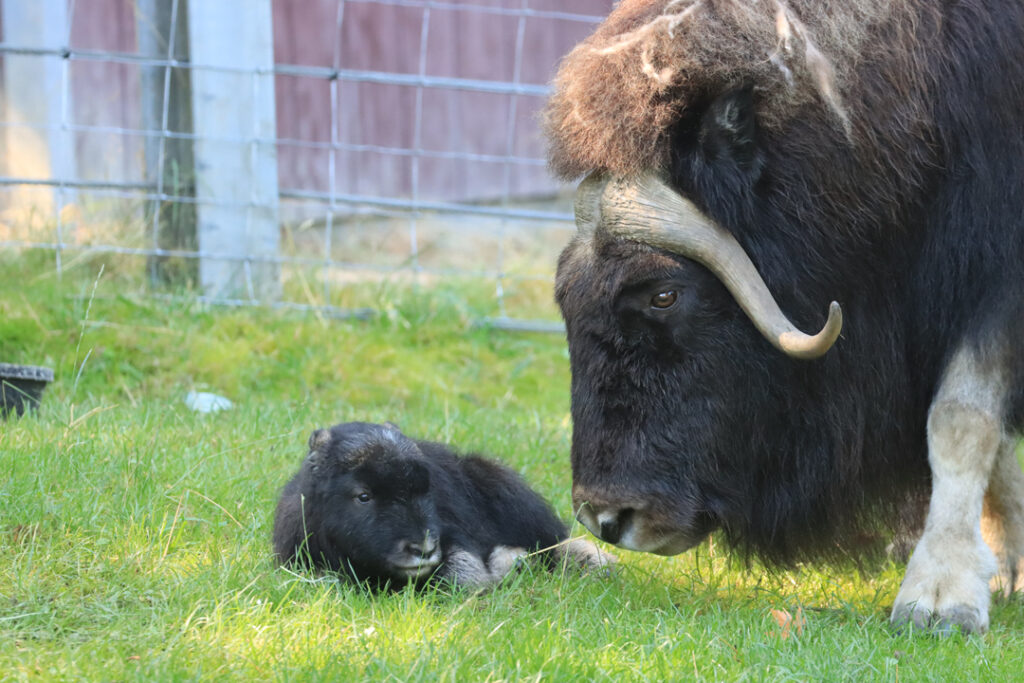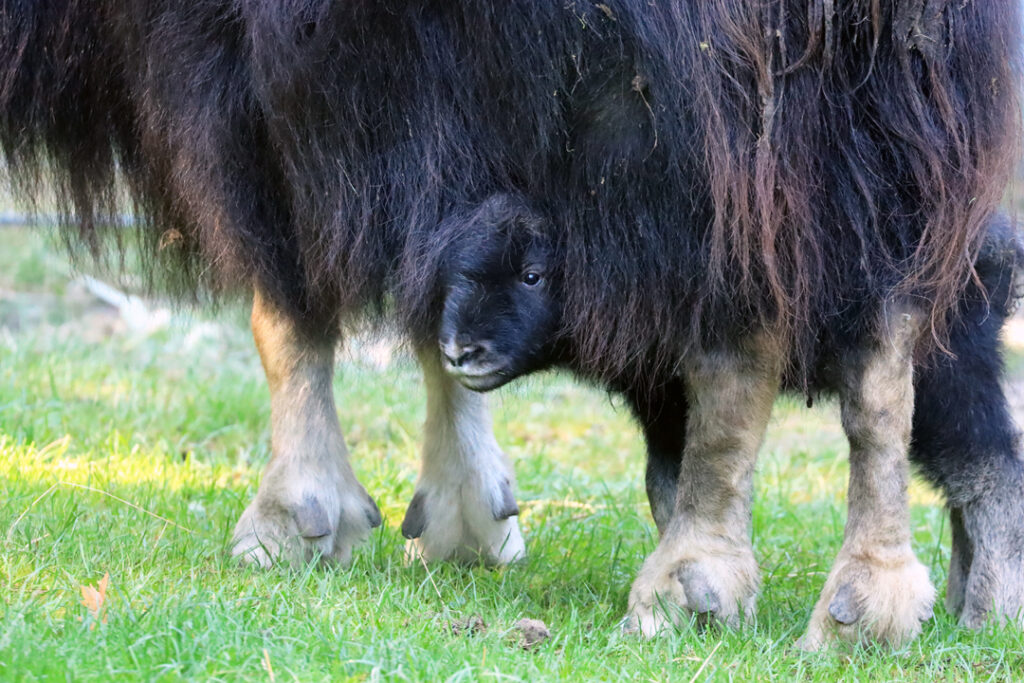IT’S A GIRL! MUSKOX CALF BORN AT POINT DEFIANCE ZOO & AQUARIUM
Charlotte the muskox gave birth to a female calf Thursday morning at Point Defiance Zoo & Aquarium. The day-old calf appears to be healthy, and in typical muskox fashion is beginning to wander around the zoo’s grassy Arctic Tundra habitat, sticking closely to mom.
The zoo’s veterinary team did a health exam of mother and calf this morning.
“The calf appears to be doing well and is gradually becoming steadier on her legs,” said Zoo Veterinarian Dr. Kadie. “She’s remarkably cute and is off to a good start.”
Dr. Kadie said the calf appears to be nursing well and vocalizing to eight-year-old Charlotte – signs of clear lungs as well as mom-calf bonding. The zoo’s veterinary team and muskox keepers will continue to closely monitor mother and calf.

Hudson, the calf’s father, was born in 2016 and arrived at Point Defiance Zoo as a calf himself.
“Charlotte is very attentive, and she’s taking great care of her calf,” said Telena, one of the zoo’s curators. “Over time, the calf will become more confident, and the pair will explore more of their habitat together.”
Meanwhile, keepers are gently approaching the perimeter of the habitat and offering willow leaf browse – Charlotte’s favorite – to get the pair comfortable with their care team.
“We want the calf to know and trust us, so we’re following Charlotte’s lead,” Telena said.

Muskoxen are grazing herd animals, roaming tundra and prairies of Greenland, Alaska and northern Canada, and calves are born able to walk and keep up with the herd almost immediately. While the new calf at Point Defiance Zoo isn’t actually grazing, she is mouthing grass and willow in imitation of her mother, said Telena.
Smaller than a Labrador, the calf is dark brown with white legs and a small white patch on her head. Unlike her parents, she has no horns. Those will gradually grow in, with buds becoming visible in three or four months and the horns themselves next year.
The calf weighs 20 pounds – a long way from Hudson’s 757 pounds and Charlotte’s 671 pounds.
Until the calf is bigger and stronger, she will stay with Charlotte in the smaller side yard in the Arctic Tundra habitat. Mother and calf also will have access to a behind-the-scenes area of the muskoxen habitat. Guests may or may not see the pair, depending on where Charlotte decides to be.
Muskoxen are an ancient species, having grazed the tundra for thousands of years. Their numbers were greatly reduced from hunting by the early 20th century. The Northwest Game Act of 1917 allowed for conservation efforts that helped their recovery, and there are now around 80,000 muskoxen in the wild. Learn more about muskoxen.
